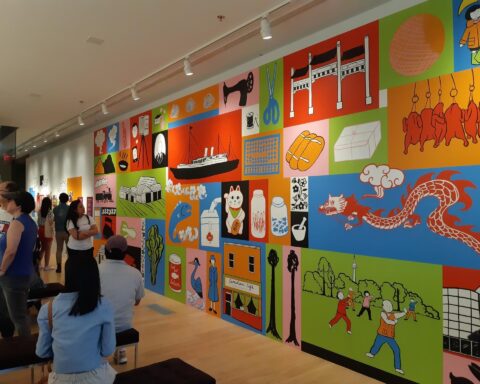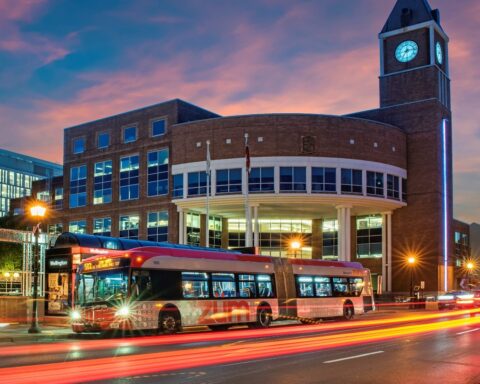![]() Waves of immigration throughout Canada’s history have made ethnic sub-populations key targets for Canadian election campaigns.
Waves of immigration throughout Canada’s history have made ethnic sub-populations key targets for Canadian election campaigns.
Historically this has benefited the federal Liberals; the party supported mass immigration while governing Canada for two thirds of the 20th century, making ethnic voting a staple of Liberal politics. Challenges have come in recent years, notably from the Conservatives — who achieved considerable electoral success in immigrant ridings in 2011 — but also from the NDP.
It’s largely forgotten now, but at one time Canadians of British origin were openly suspicious of immigrants’ politics. In 1924, one prominent Winnipeg businessman said of newcomers: “We welcome all good citizens from foreign lands, but if they do not believe in the Christian religion, nor intend to keep our laws, they should be asked without delay to return from whence they came.”
Let’s look at some constituencies where there are large concentrations of Canadians from various ethnic backgrounds.
Ukrainians
Many of the immigrants that Winnipeg businessman was talking about came from Eastern Europe, particularly the Ukraine. Most came prior to World War I and settled on margins of the good farmland in the prairie provinces.
Based on the 2013 redistribution, in 2011 the top five federal ridings with the highest concentration of ethnic Ukrainians would have elected Conservatives, all but one by comfortable margins, all in Manitoba or Alberta. Most of this population is made up of Ukrainians whose families migrated to Canada prior to World War I or shortly thereafter and no longer speak the language.

The federal Liberals were successful at first with this vote, winning strong Ukrainian ridings in the ’20s, ’30s and ’40s. But the Liberals were displaced on the prairies by the Progressive Conservatives under John Diefenbaker in the 1950s.
Harper has made support for the Ukraine in its struggle with Russian-backed secessionists a key symbolic foreign policy priority — no doubt partly for its domestic political benefit, even if many diplomats remain unimpressed. However, in 2015 Conservative support has slipped even in the party’s strongholds — and that includes ridings with significant Ukrainian populations.
Ethnicity is not the only influence on voting behaviour.
Four out of five of these ridings would be retained by the Conservatives today, but current polling suggests one (in urban Winnipeg) could go to the NDP. Note that this constituency, Elmwood-Transcona, is about 21 per cent Ukrainian heritage. A majority voters are from other backgrounds. Ethnicity is not the only influence on voting behaviour.
(Data on the ethnic composition of electoral districts comes from the 2011 National Household Survey, which replaced the long form census.)
Italians
Large numbers of Italians settled in Ontario and Quebec after the Second World War, mainly in Toronto and Montreal. They reliably supported the Liberals. That may be changing.
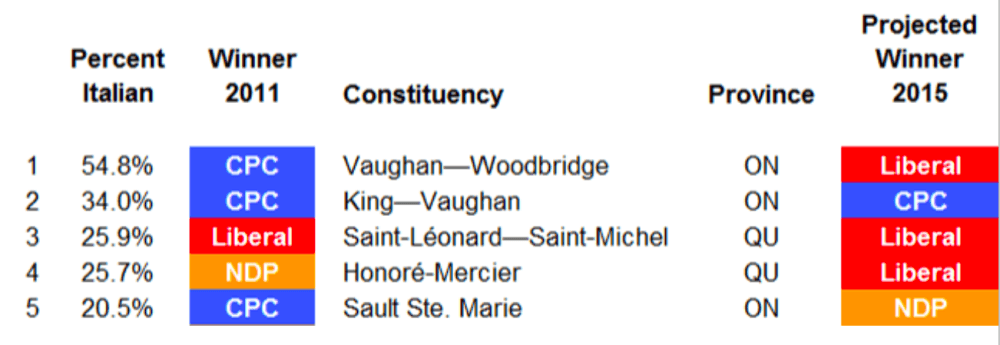
The example of Toronto’s designated ‘Little Italy’ neighbourhood is a good illustration. The neighbourhood is located in University-Rosedale, a constituency with the 46th-largest Italian population in Canada (7.6 per cent). But many Italian-Canadians have long since moved to the suburbs.
The two constituencies with the highest concentration of Italian voters are relatively prosperous GTA ridings just north of Toronto (both King-Vaughan and Vaughan-Woodbridge rank among the top 25 most affluent constituencies in Canada).
Both would have elected Conservatives in 2011. Current polling suggests the Liberals could win back one of the two (and also pick up an NDP seat in Montreal). And the northern Ontario riding of Sault Ste. Marie, which elected a Conservative in 2011, is likely to go NDP.
South Asians
More recent years have seen large-scale immigration from Asia. The Conservatives targeted these ridings in 2011 and achieved significant, but not universal, success.
Over time, new Canadians become more integrated into Canadian society. As they do, their ethnic identities become less important in determining how they might vote.
Again, using the redistributed vote we find that half of the top 10 South Asian constituencies would have elected Conservatives in 2011, although the NDP would have won four and the Liberals two.
With the considerable improvement in Liberal support during the current election, it is likely that the Conservatives would retain just a third of these constituencies; the NDP would drop two and the Liberals would make significant gains.
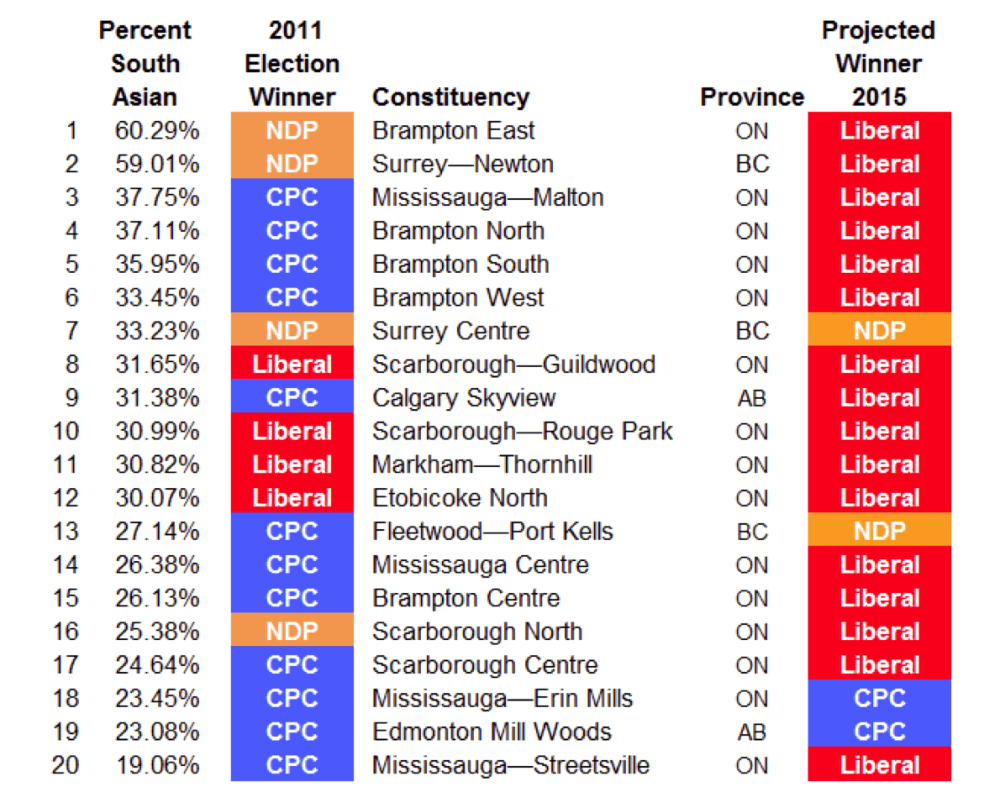
Chinese
We see a similar pattern among constituencies with substantial Chinese populations: considerable Conservative success in 2011 with likely large-scale losses, mainly to the Liberals, but also one to the NDP, anticipated in 2015.
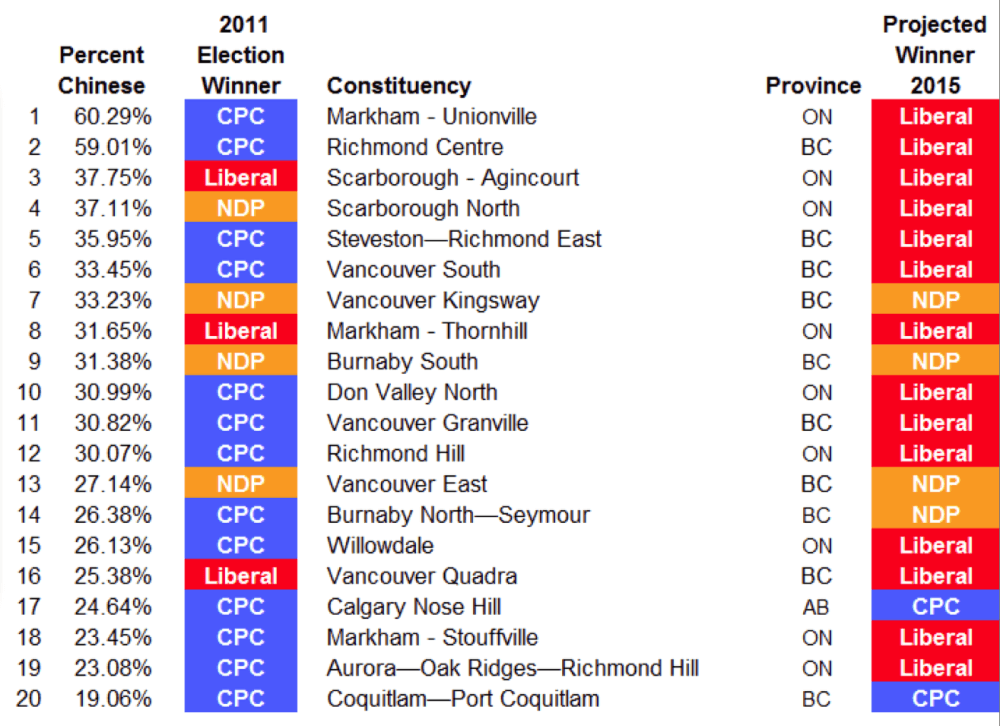
Over time, new Canadians become more integrated into Canadian society. As they do, their ethnic identities become less important in determining how they might vote.
As second, third and fourth generations replace the original immigrants they develop political views they share with others outside of their ethnic sub-groups. Whether they are environmentalists or social justice advocates, free traders or anti-tax conservatives, their ethnic identities have progressively less influence on how they vote and view politics.
Although the Liberals continue to do well among ethnic minority voters, political support from Canada’s minorities has diversified. The efforts made by the Conservatives in 2011 met with considerable success and the NDP has made its own gains. The days of monopolizing the immigrant vote are over, and the political importance of ethnic identity clearly fades over time.
Paul Barber is a retired former public servant and journalist. He worked for the governments of Ontario and Manitoba, mainly in intergovernmental relations, and as a TV current affairs documentary producer in Winnipeg and for the program The Journal in Toronto. He offers his opinions on politics and media at the blog: tcnorris.blogspot.com
Published in partnership with iPolitics.ca.



